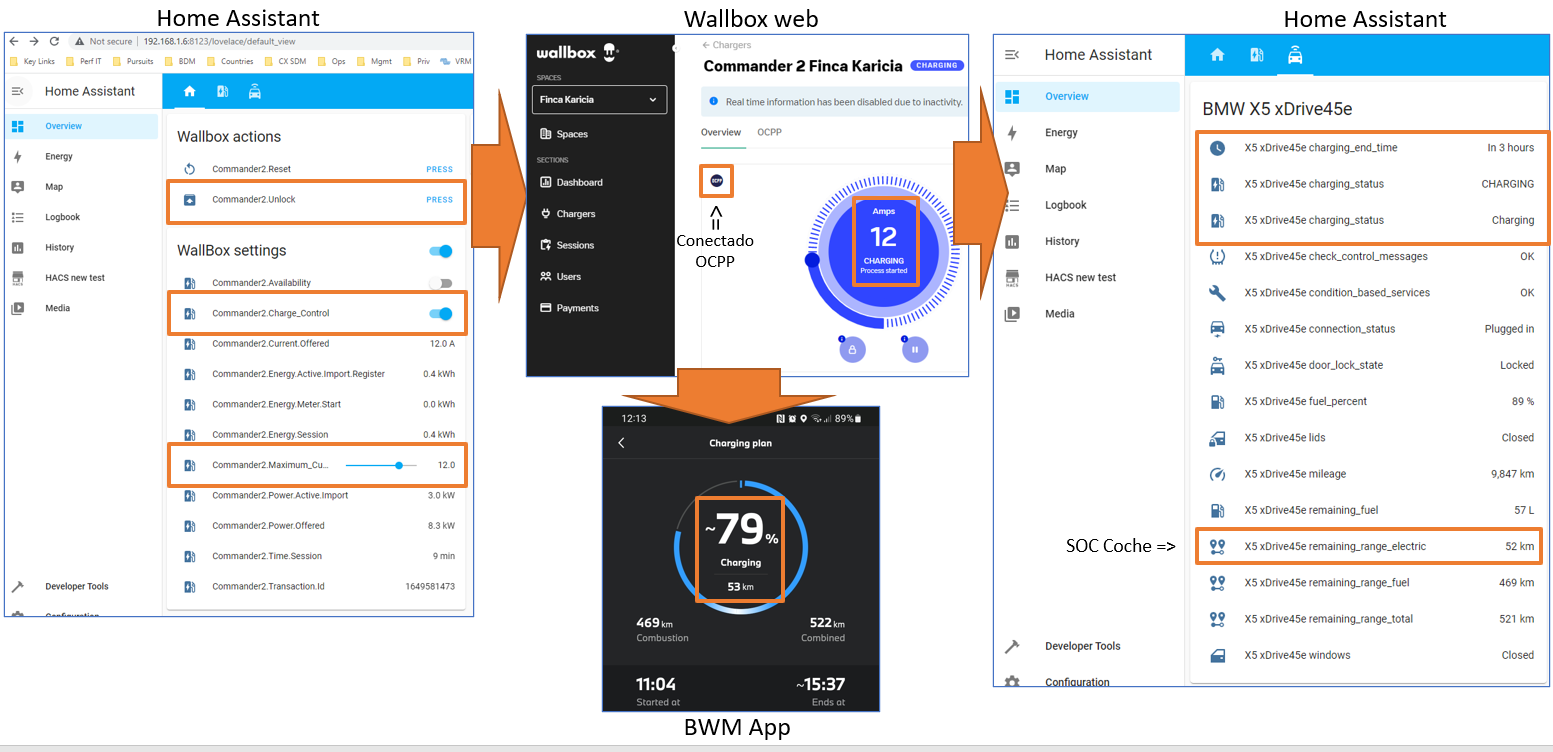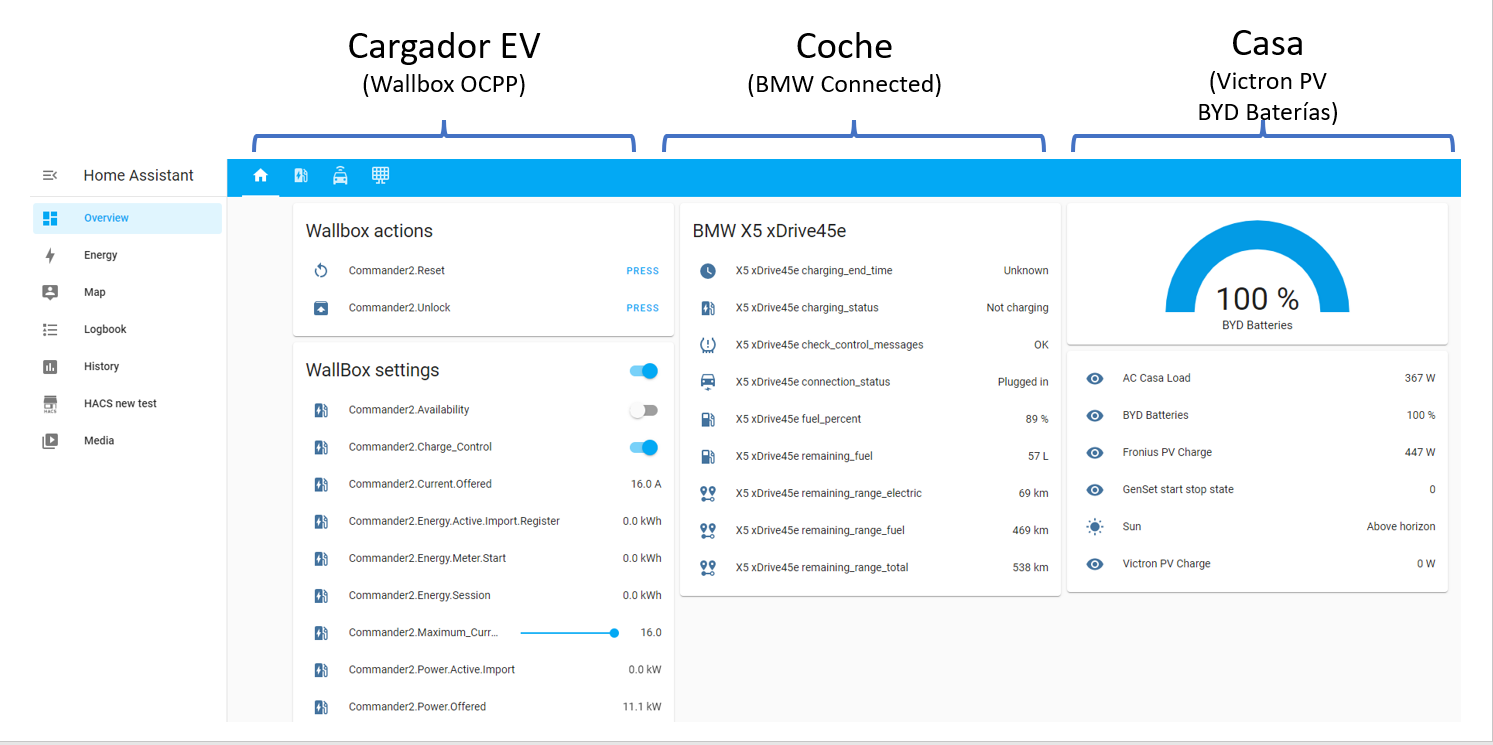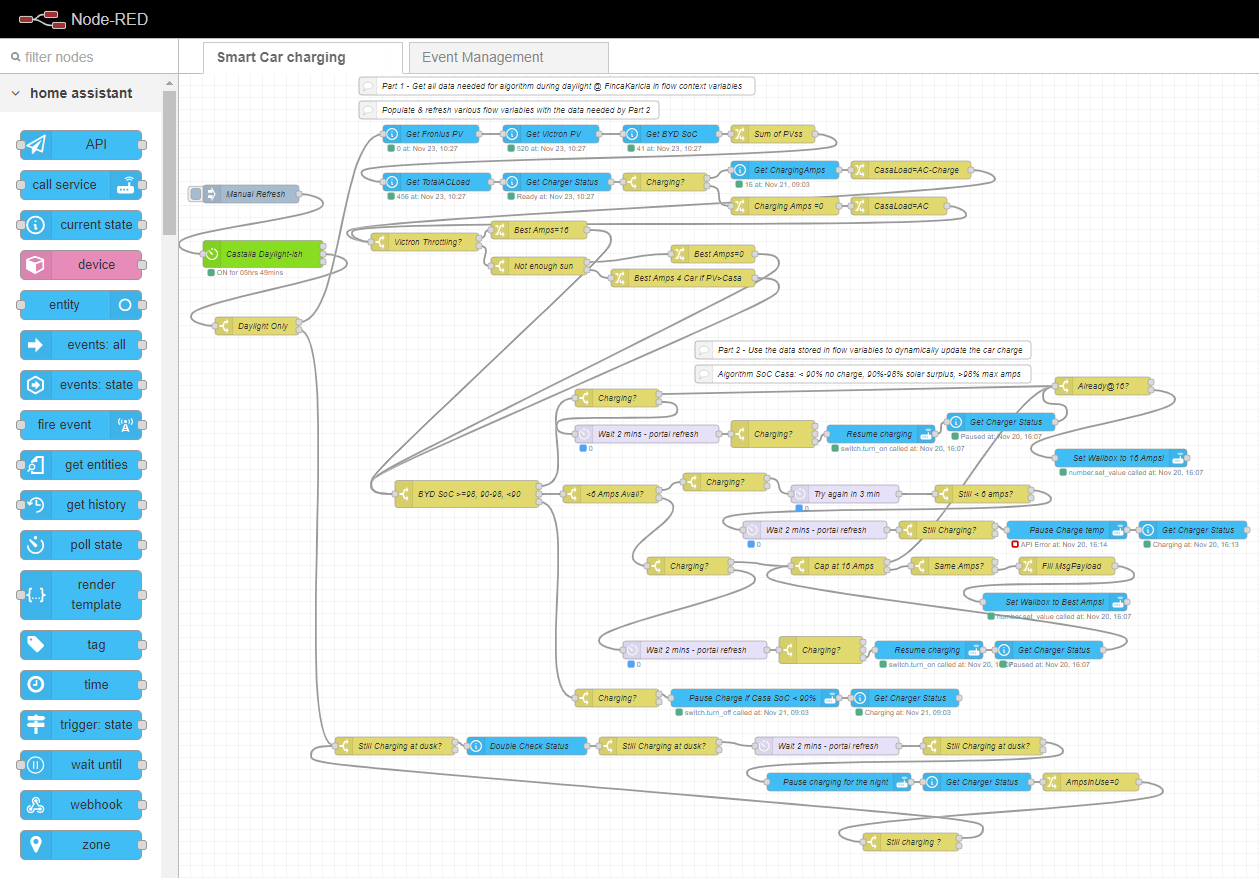Dear all,
This will be my first post on this community - reason for reaching out is that I really feel stuck and pretty lonely in this adventure. I've been disconnected from the grid for about 5 years - the setup has evolved, but today is based on Victron charger, additional Fronius inverter due to expansion of solar panels, 16 KWh lithium batteries and a bit over 10 KWp of solar panels installed. I live in Spain so most of the days there is no issue of sun.
My most recent expansion of solar panels was to prepare the arrival of my new hybrid car (which has a 24KWh battery) - but when I asked about installing a wallbox ... all my plans felt apart. The car charger installer told me there was no system on the market for off grid situations, and my Victron reseller told me they have no experience with EV charging
The problems with standard solutions
1) Most EV car charging have a "solar kit" which basically is a device you connect between the inverter and the house, which will continuously instruct the car charger to "suck as much amps as possible" from the solar panels (continuously configure car charger amp level to estimate max PV output minus house consumption). For usual inverter based implementations connected to the grid, no problem, for systems with a charger and batteries - it's a recipe for emptying (and over time killing) batteries as the charger will likely provide the max power possible (e.g. if you have a 10KW charger, the system will provide those 10KW from the batteries even if not available from solar)
-> traditional EV charging solar kits cannot be used
2) When the house lithium batteries are full, Victron will throttle the PV output to the house consumption - so to dynamically program the car charger to maximize PV energy consumption, batteries have to not be completely filled
-> traditional Victron charger behaviour will stop EV charging if coupled with an EV solar kit
3) The solution that will be recommended by most electricians is to install a programmable relay that will only provide electricity to the EV charger if the SOC > value x. The EV car charger vendor is telling me that cutting electricity going to the EV charger will regularly force a hard reset and is a bad idea - as an EV charger is not just a plug.
-> unless if proven otherwise programmable relays based on SOC state is not an option
Looking at this community, this is not the first time someone is looking into this.
https://community.victronenergy.com/questions/54833/victron-oem-wallbox-status-features.html
I've been looking into this problem and I'm actively working on a solution
- I've got Python scripts getting all required data from the Victron GX over modbus (SOC, PV prod, consumption) - and my EV car charger vendor tells me that adding a Phoenix Contact EM-CP-PP-ETH car charge controller SHOULD work (Python -> Modbus -> Phoenix Contact -> RS485 -> Car charger to set the # amps)
- I've got HomeAssistant pulling the same data again over modbus (much cleaner and scalable approach) - would still need the Phoenix Contact likely.
- I have installed an OCPP server on HomeAssistant (if you are new to OCPP, check: https://www.chargelab.co/industry-advocacy/ocpp), that IN THEORY should allow me to program dynamically the amount of amps without modbus on OCPP 1.6 smart charger (often smart = programmable in EV charging) ... but again no one able to confirm if this is working.
I am still trying to find the right ev car charger (e.g. wallbox) to start it all, but am wondering
A) Is there a better / less custom way of maximizing green car charging when off grid ? Or did I get any of the 3 problems above wrong ?
B) Has anyone got OCPP to work with a car charger for dynamically SETTING the # amps ?
C) Can someone recommend any programmable car charger that has natively proper ModBus register documentation (or OCPP documentation coming with it even better)
I'll gladly share all working python scripts or working HomeAssistant configurations once I got it working live.
Thanks in advance for any pointer!
IceKream.




